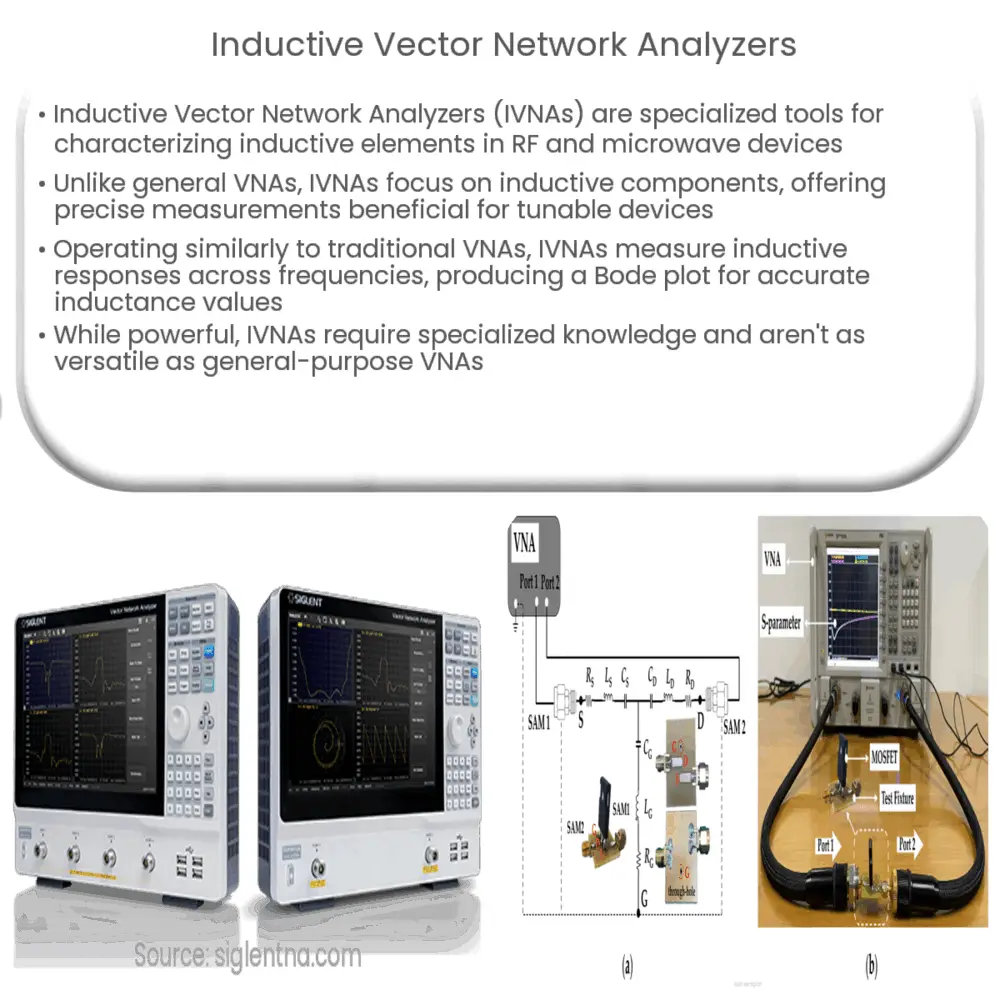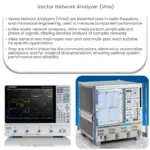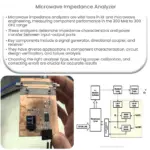Explore the intricacies of Inductive Vector Network Analyzers (IVNAs), their working principle, applications, advantages, and limitations.

Introduction to Inductive Vector Network Analyzers
Understanding the complex inner workings of modern radio frequency (RF) and microwave devices requires specialized tools. A critical instrument among these tools is the Vector Network Analyzer (VNA). VNAs are employed in the analysis of electrical networks, particularly those working at radio frequencies. They are used to characterise a wide range of devices including antennas, filters, and amplifiers.
Concept of Vector Network Analyzers
At its core, a VNA is a device that applies an RF test signal to a device under test (DUT) and measures the signal that comes back. It accomplishes this by employing a system of directional couplers, bridges, or other devices to separate the incident and reflected waves. A VNA does not just measure the magnitude of the response (like a scalar network analyzer), but also the phase, hence the term “vector” in VNA.
Inductive Vector Network Analyzers
The Inductive Vector Network Analyzer (IVNA) is a specialized type of VNA. While traditional VNAs are used to analyse a variety of RF components, an IVNA specifically focuses on the characterisation of inductive elements, which are fundamental building blocks in various types of electronic and communication circuits. The precise inductance measurements provided by IVNAs can be particularly beneficial for the development of tunable devices, where the inductive elements can be varied to adjust the response of the device.
Working Principle
The IVNA operates using a similar principle to a traditional VNA, but it uses a different technique to measure the inductive response of a component. Instead of just measuring the incident and reflected waves, the IVNA measures the phase and magnitude of the response over a range of frequencies. This allows the analyzer to produce a Bode plot – a graph of magnitude and phase as a function of frequency. This inductive response can be directly related to the inductance of the DUT, providing an accurate measurement of this critical parameter.
Key Components of an IVNA
- RF Source: The RF source generates the test signal that is applied to the DUT. This signal can be swept over a range of frequencies to determine the frequency response of the DUT.
- Detector: The detector measures the reflected signal from the DUT. This includes both the magnitude and phase of the reflected signal.
- Data Processor: The data processor takes the measurements from the detector and calculates the inductive response of the DUT. This can be displayed as a Bode plot for easy interpretation.
Applications of Inductive Vector Network Analyzers
IVNAs have a broad range of applications in various fields. Due to their precision and high frequency capabilities, they are indispensable in research, development, and quality control environments.
- Telecommunications: IVNAs are used to analyze and design tunable inductive elements in RF circuits used in telecommunications systems.
- Research and Development: In R&D settings, IVNAs are used to evaluate novel inductive materials and design tunable devices.
- Quality Control: IVNAs play a vital role in quality control, ensuring the inductive elements in electronic circuits meet their specified inductance values.
Advantages and Limitations
The IVNA is a powerful tool with many advantages. Its ability to accurately measure inductance values across a wide frequency range is unmatched, making it a critical tool for characterizing inductive components. Furthermore, its capability to generate Bode plots provides valuable insights into the frequency response of inductive elements.
However, the IVNA is not without its limitations. These include complexity and cost, as well as the requirement for specialized knowledge to interpret the results. In addition, the IVNA is specifically designed to measure inductive elements, so it’s not as versatile as a general-purpose VNA.
Conclusion
Inductive Vector Network Analyzers are pivotal in the modern world of electronics and telecommunications. As technology continues to evolve, the demand for precise and accurate measurement tools will only grow. Despite their limitations, IVNAs are set to remain an essential tool in the electronics industry, assisting engineers in the design, development, and maintenance of cutting-edge RF and microwave devices. Their unique capabilities in characterizing inductive elements, coupled with their precision and versatility, ensure their position in a diverse range of applications. The IVNA is truly a testament to the leaps and bounds of progress in the field of electrical engineering.




